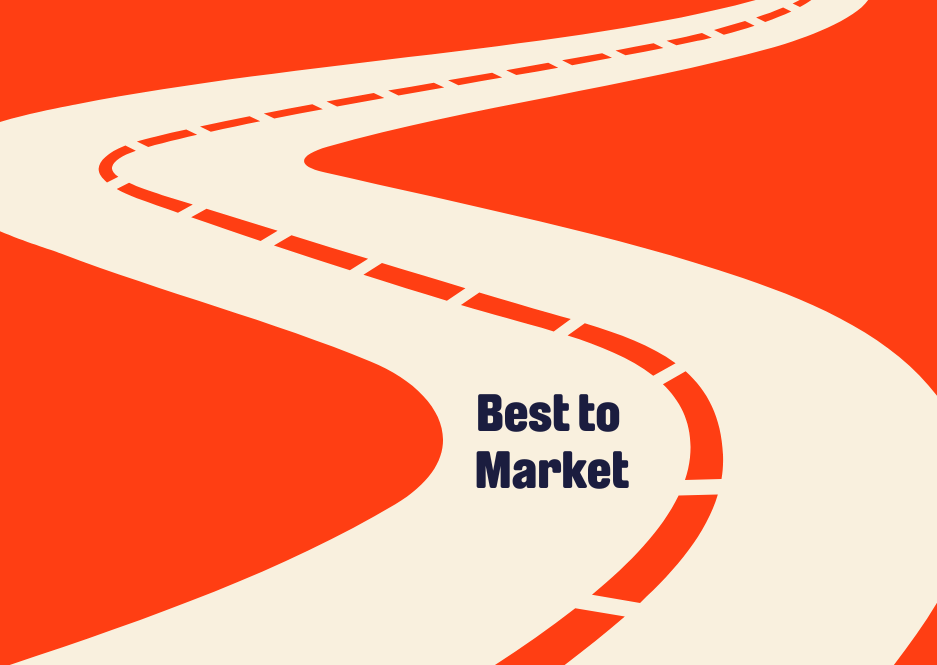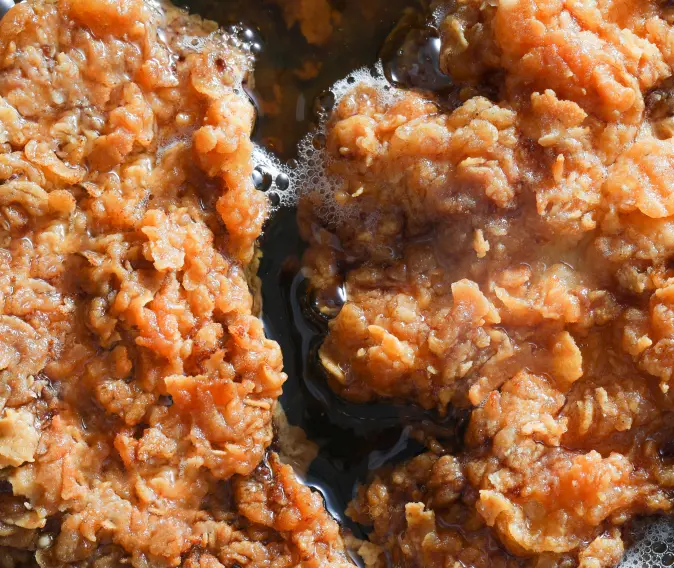Road to Rubicon: Growing Best-to-Market Cultivated Meat
December 14, 2023

Written by
UPSIDE Foods
From our first cultivated beef meatball in 2016 to becoming the first company to sell a cultivated meat product in the U.S. in 2023, every step has been a testament to our commitment to being the “best to market” as an industry-defining brand. Looking ahead, 2024 promises to be another transformative year for UPSIDE Foods.
Operating in the open, we invite everyone to join us on this revolutionary journey. We speak with passion and conviction, driven by the urgency of the challenge, to inspire others to be part of our mission. This openness, while generating significant interest, also presents the challenge of managing expectations around the pace of innovation.
"Best to Market" – Crafting Delightful, Safe, and Inspiring Products
At UPSIDE, being “best to market” means delivering safe, delicious, and inspiring products that set the standard for the rest of the industry. Our species-agnostic platform utilizes two production processes: tissue and suspension. Tissue production creates “whole-textured” products like filets and premium cuts, while suspension production makes meat with “ground texture” that is well suited for foods like sausages and dumplings made by blending our cultivated chicken cells with ingredients like plant-based proteins and spices.
We embraced the challenge of tackling the hardest problem first: creating a whole-textured product from over 99% chicken cells that showcases the potential of cultivated meat. This achievement not only proved that cultivated meat can meet, if not surpass, the taste, tenderness, and appeal of conventional, it also unlocked valuable learnings for scaling our suspension process and is informing the design and development of our next generation of tissue cultivators, which are now under development.
We’ve garnered significant attention through the launch of our limited production whole-textured cultivated chicken. Featured monthly at Bar Crenn, it has been described by a food reporter from The Washington Post as “the most chicken-y chicken I’ve tasted in a long time.“
This product is just the beginning.
Commercialization Strategy – Bringing Cultivated Meat to the Masses
As we’ve shared previously, our commercialization plans involve scaling suspension-based, “ground texture” or blended, chicken products first. This decision is based on our readiness to scale that platform and our confidence that this platform can create mouthwatering, safe products that consumers will love. The regulatory approval process for this production method is underway, and we’re excited to share updates as we go.
Our go-to-market strategy starts with restaurants, led by our first chef partner, three-Michelin-starred Chef Dominique Crenn. We’re developing a product that is versatile enough for use in various culinary settings, allowing chefs to customize to their preferences – whether they want to grill, fry, or bread it. We believe “tasting is believing,” and partnering with trusted culinary experts will help consumers embrace the future of food before we begin to sell in retail settings. Stay tuned for more exciting partnership announcements.
Consumer adoption is a key part of our strategy. We envision a path forward filled with educational campaigns and activations, allowing more people to experience our products firsthand. We can’t wait to let more consumers in on our secret – our cultivated chicken tastes like… CHICKEN!
Defining “Scale” – Beyond Pounds to Catalyzing Change
As we celebrate our inaugural sale, our focus is on achieving scale – a dynamic pursuit involving increased production and lowered costs.
While the output of our first commercial plant might seem trivial compared to the global meat market, our pursuit transcends pounds of meat – it’s about catalyzing change and challenging the status quo. Success is measured not just in market share but in mindshare, aiming to build excitement and demand for cultivated meat. Mindshare will bolster the entire industry and perhaps even inspire conventional meat producers to seriously explore this market. We’re proud to be leading and pioneering the industry, but we know that scale can’t be achieved by UPSIDE alone. That’s why from our earliest days, one of our core values has been “Big Tent” – creating a thriving ecosystem around us to help propel the industry forward.
Scale is a moving target, influenced by dynamic circumstances. In the face of macroeconomic challenges, strategic resource allocation is crucial. We’ve made tough decisions, pausing efforts on seafood for now to focus on our primary commercial species, chicken and beef. Prioritizing chicken and beef aligns with consumer preferences and environmental impact.
In line with this, we’re taking a thoughtful approach to building Rubicon, our commercial-scale facility. We will be building Rubicon in phases, aligned with our goal to navigate the challenges of the current funding environment and also to continue optimizing and refining as we learn. This proactive approach will allow us to make continuous progress towards scale.
Cultivating a Movement – Beyond UPSIDE
Our goal is not just to build a business, but to be an industry defining brand and a significant force innovating for a sustainable future. There are now over 150 companies, nearly $3 billion in investments, and new regulatory approvals pending in the cultivated meat space. We’re working not only on scaling UPSIDE but also on helping to catalyze a global ecosystem through supply chain partnerships, academic programs dedicated to advancing the science of cultivated meat and crucial private-public partnerships that endorse cultivated meat as a sustainable investment.
Our ambition is bigger than a niche business or quick profits. We aim to be a significant force, mirroring the transformative impact of companies like Tesla, Apple, Google, or Microsoft on their respective industries. These companies didn’t become giants overnight; their groundbreaking ideas seemed unconventional at the time, and now we take them for granted. We see parallels for cultivated meat.
As we embark on the Road to Rubicon, we invite you to join us for a journey filled with twists and turns. Each step paves the way for a brighter future of food. Fasten your seatbelts and embrace the excitement – the road to more humane and sustainable meat production is a journey worth taking.



